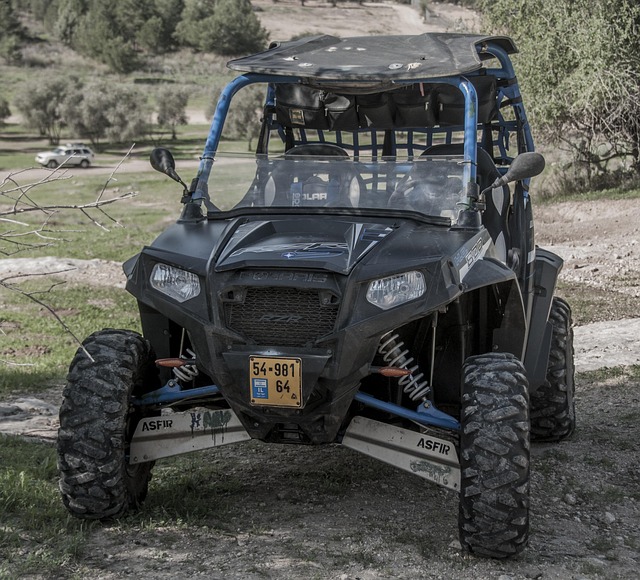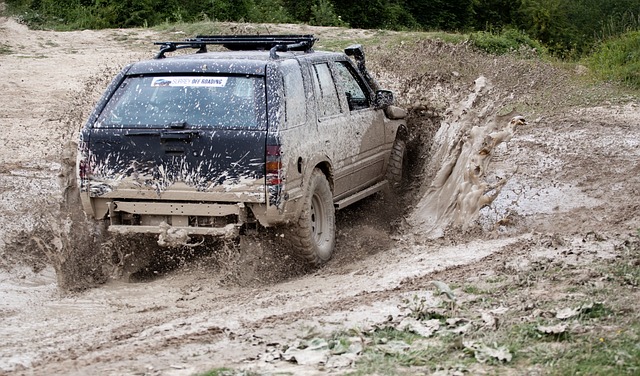Rotors, vital for RGV Overland 4×4 braking systems, come in solid or vented types, each with unique advantages. Solid rotors offer durability and cost-effectiveness, while vented rotors enhance cooling. Choosing the right replacement requires matching vehicle performance and driver preferences. Troubleshooting common issues like vibrations or noise during braking involves inspecting for warping, cracks, or thinning. Regular maintenance, including rotor replacement when needed, ensures optimal RGV Overland 4×4-repair and enhances safety.
“Unleash the power of your RGV Overland with a focus on its essential components—rotors. This article serves as a comprehensive guide, delving into the understanding and maintenance of rotors in your 4×4 vehicle. From comprehending their pivotal role in smooth driving to mastering troubleshooting and replacement techniques, we equip RGV owners with valuable insights. Learn how different rotor types contribute to optimal performance during off-road adventures. Embrace the art of RGV overland 4×4 repair and elevate your driving experience.”
- Understanding Rotors: Their Role and Types in RGV Overland 4×4 Repair
- Troubleshooting and Replacing Rotors: A Comprehensive Guide for RGV Owners
Understanding Rotors: Their Role and Types in RGV Overland 4×4 Repair

Rotors play a pivotal role in the smooth operation and performance of vehicles, especially in rugged terrains like those tackled by RGVs (Overland 4x4s). These components are integral to the braking system, responsible for converting kinetic energy into heat during braking, thereby slowing or stopping the vehicle. Understanding rotor types and their functions is essential when undertaking RGV overland 4×4 repair, as it ensures technicians select the right replacement that matches both the vehicle’s performance characteristics and the driver’s preferences.
In the context of RGVs, rotors can be categorized into several types based on design, material, and application. Solid rotors, for instance, are a common choice due to their durability and cost-effectiveness, while vented rotors offer enhanced cooling capabilities, ideal for vehicles that will face prolonged or intense braking demands. Moreover, understanding the differences between solid and hollow rotors can significantly impact the overall repair process, as technicians must consider factors like heat dissipation, weight reduction, and brake dust management during RGV overland 4×4 repairs.
Troubleshooting and Replacing Rotors: A Comprehensive Guide for RGV Owners

Troubleshooting and replacing rotors is a crucial skill for owners of RGV Overland 4x4s, as it can significantly impact the vehicle’s performance and safety. The first step involves identifying the issue, which could range from minor vibrations to severe noise during braking. Check for warping, cracks, or thinning, as these are common indicators of worn-out rotors. Visual inspection is key; if visible damage is present, replacement is often necessary.
For repairs, a multimeter can be used to check electrical continuity and resistance, aiding in diagnosing issues like short circuits or bad connectors. If the rotor is beyond repair, it should be replaced with a new one that matches the vehicle’s specifications. Ensure compatibility by consulting the RGV Overland 4×4-repair manual or seeking guidance from experts. Regular maintenance and timely replacement of rotors can prevent more serious brake problems down the line.
Rotors play a pivotal role in the smooth operation of your RGV Overland 4×4, ensuring optimal performance and safety. By understanding their types and functionality, as discussed in this guide, you can effectively troubleshoot and replace them when needed. This knowledge empowers RGV owners to tackle common issues, extend the lifespan of their vehicles, and enhance overall off-road experiences. When performing repairs or upgrades, always prioritize quality components for reliable 4×4-repair solutions.



